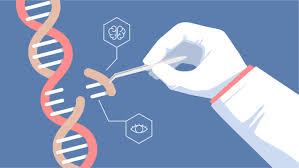Didn't think much about genetic engineering until a US company in PEI altered an Atlantic salmon.
Ten years and two court cases later, I now think GE is a major risk for nature--not just salmon--and for human rights. And it’s coming fast.
Ten years and two court cases later, I now think GE is a major risk for nature--not just salmon--and for human rights. And it’s coming fast.

Et les Canadiens prennent note que notre pays a l'un des régimes les plus permissifs à l'égard du génie génétique. Les Canadiens sont 1er au monde à manger un animal génétiquement modifié (le saumon) et nous sommes 4 eme plus grands producteurs de plantes génétiquement modifiées.
And our Government are not talking to us about these decisions which set global precedents. No engagement with Canadians, no engagement with Indigenous Peoples.
Particularly need engagement where species has wild counterpart, such as salmon, trout and other fish, but could also be plants, amphibians, insects, birds and mammals. 

Le saumon est le premier animal génétiquement modifié à avoir été approuvé, mais des laboratoires du monde entier étudient le génome de nombreuses espèces différentes. CRISPR et d'autres technologies rendent la manipulation génétique plus rapide et plus facile. 

With salmon main concerns are genetic contamination of wild salmon and Indigenous Peoples’ rights. More on triploidy, land-based containment, risk assessment, etc. later. 

And yes this is complex and complicated topic. I still don’t know enough, but do know enough that it needs full attention of our governments and regulators. 

As you can perhaps tell, I am going to be talking lots about genetic engineering in next few weeks. Check out this petition if you got this far.
e-activist.com/page/64008/pet…
e-activist.com/page/64008/pet…
• • •
Missing some Tweet in this thread? You can try to
force a refresh





